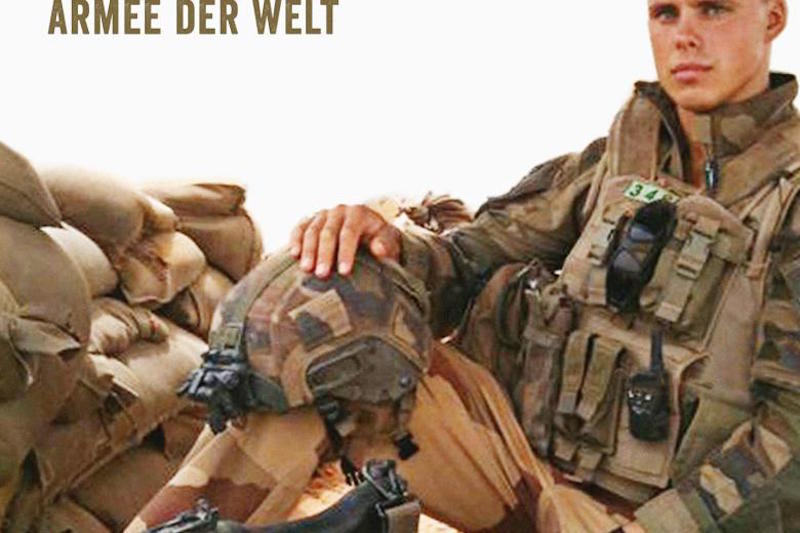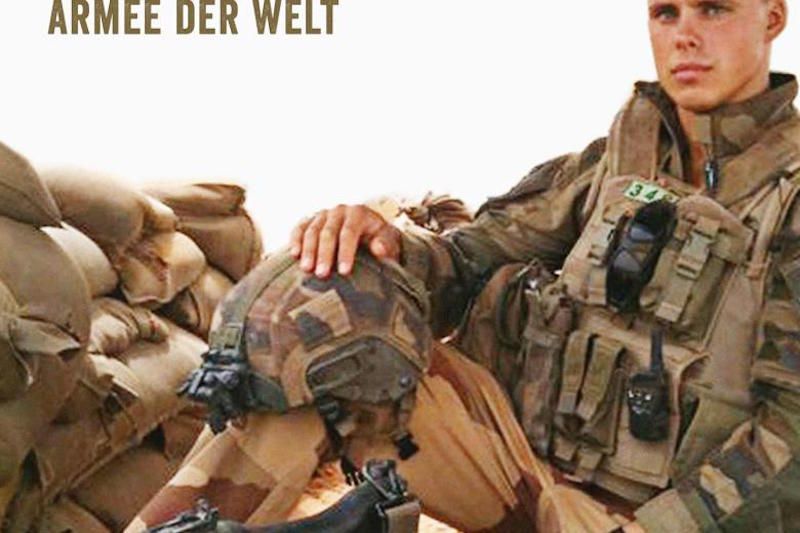Get the weekly SPARTANAT newsletter.
Your bonus: the free E-Book from SPARTANAT.

With the Legion in Mali
The German Stefan Müller was already in Mali before joining the Bundeswehr. In 2013, he went on an African mission with the Foreign Legion. In his memoir "Mythos Fremdenlegion" - HERE our book review - he also tells of a reconnaissance mission with enemy contact. Today on SPARTANAT, we bring you an excerpt from the bestseller:
In May 2013, I arrived in Gao with my regiment - the 2nd Regiment Etrangere d'Infanterie. The patrols of the Foreign Legion were tasked with tracking down the Islamists in the huge and hard-to-access area - roughly the size of the Federal Republic of Germany. A difficult and lengthy job. Because our opponents remained in their hiding places and only occasionally attacked from ambush. Besides me, there was a sergeant and the driver in the jeep on that day. I had only met them the day before. They belonged to a different unit and needed a third man for the mission. Since I had just recovered from malaria and my company - while I was still in the infirmary - had set out on a two-week patrol, I was available. Anything was better than sitting around doing nothing. I had been healthy again for three days and felt guilty for being inactive. Furthermore, I wanted to get out again and experience something, I longed for action. Unfortunately, it was impossible for me to join my company. They were in the middle of nowhere and could only be reached by helicopter. However, the helis did not just fly any legionnaire "casually" into the combat zone to deliver him to his unit.
It was already eleven o'clock, and we had been on the road for five hours. So far, absolutely nothing had happened. I was getting really frustrated. No sign of action.
Instead, I was dropped off in the middle of the desert, more than five hours away from my company, with a load of water, beer, some vehicle parts, and ammunition. There I came across the unit of the Foreign Legion, with which I had been on a reconnaissance mission since six in the morning. The sergeant, a sporty guy, was in charge. He was Yugoslavian, around thirty years old, I estimated. When he laughed, a row of shining white teeth lit up his sun-tanned face. A long scar was clearly visible on his right cheek. The driver, a Romanian, was younger. He had an impressive bicep, close-set eyes, and - like most legionnaires - a shaved head.
It was already eleven o'clock, and we had been on the road for five hours. So far, absolutely nothing had happened. I was getting really frustrated. No sign of action. I was standing on the back seat, stretching my upper body through the hatch in the roof and boredly scanning the surroundings. My submachine gun was in front of me. No one spoke, the scorching heat affected all of us equally. I looked through my binoculars: heat shimmering in the air, nothing else.
The purpose of such reconnaissance missions is to locate the enemy and engage them in combat. In Mali, this was done constantly. The companies were on the move for days and weeks. Each of us hoped that there would finally be some combat. That's what we were trained for and sent to Mali for. But in ninety percent of cases, nothing happened. The Islamists preferred to disappear when they saw us coming. Suddenly the sergeant said:
"Do you see that too? Slightly to the right in front of us." I looked in that direction. Yes, there might be something there, about one or two kilometers away. I looked through my binoculars and saw a large dust cloud rising there. That was for sure. And it was moving against the direction of the wind.
"There might be something driving there," I reported. In the desert, you can spot vehicles from a great distance because they trail quite a bit of dust behind them. It was definitely unusual for someone to be so deep in the desert. The nomads limited their wanderings to more populated areas due to the fights with the Islamists. There was nothing here except the Algerian border, a few hundred kilometers to the north.
I stood with my legs wide apart on the seat to maintain my balance. Our vehicle was now also causing a high dust cloud. Whoever was out there could now easily discover us too.
"Let's take a closer look at that!" decided the sergeant. I gripped my submachine gun tightly as the vehicle jerked forward. I stood with my legs wide apart on the seat to maintain my balance. Our vehicle was now also causing a high dust cloud. Whoever was out there could now easily discover us too. For a split second, I thought that we were only three and relatively lightly armed. We were the vanguard of a group of seven vehicles, several hundred meters behind us. Speed is a crucial factor in reconnaissance missions, which is why heavy weapons are not carried. Didn't matter, now something was finally happening!
The dust cloud on the horizon was still moving in the same direction. Our driver stepped on the gas. As long as the other did not spot us and kept the same direction, we had a chance. We approached from the side and quickly caught up. I saw the shadow of our vehicle racing alongside us on the ground. The VBL has a compact silhouette: four wheels, angular shape. A fast, off-road reconnaissance vehicle, fixed at 90 kilometers per hour. When I saw it for the first time, I thought of a desert rally.
I tightened the scarf around my nose and adjusted the strap of my helmet. The hot wind blew in my face, the grains of sand felt like a thousand needles on every exposed area. I squinted because even my sunglasses couldn't protect me from them, and lifted my rifle. Every time we raced over a bump or a stone, the vehicle made a decent jump. I was tossed around in my hatch and braced against the edge to prevent being thrown out.
"And? What do you see?" the sergeant asked me. For a brief moment, I thought I saw a black dot in the blowing sand through my binoculars. It was hard to keep the rifle steady, and each jolt of the jeep changed my field of vision. Suddenly, I saw something glinting - like metal. "There's something there..." I said.
"Mythos Fremdenlegion: Mein Einsatz in der härtesten Armee der Welt" by Stefan Müller, Econ Verlag, 336 pages, Euro 18.00 (book) and Euro 14.99 (Kindle)
SPARTANAT is the online magazine for Military News, Tactical Life, Gear & Reviews.
Send us your news: [email protected]
Ad
similar
Get the weekly SPARTANAT newsletter.
Your bonus: the free E-Book from SPARTANAT.


